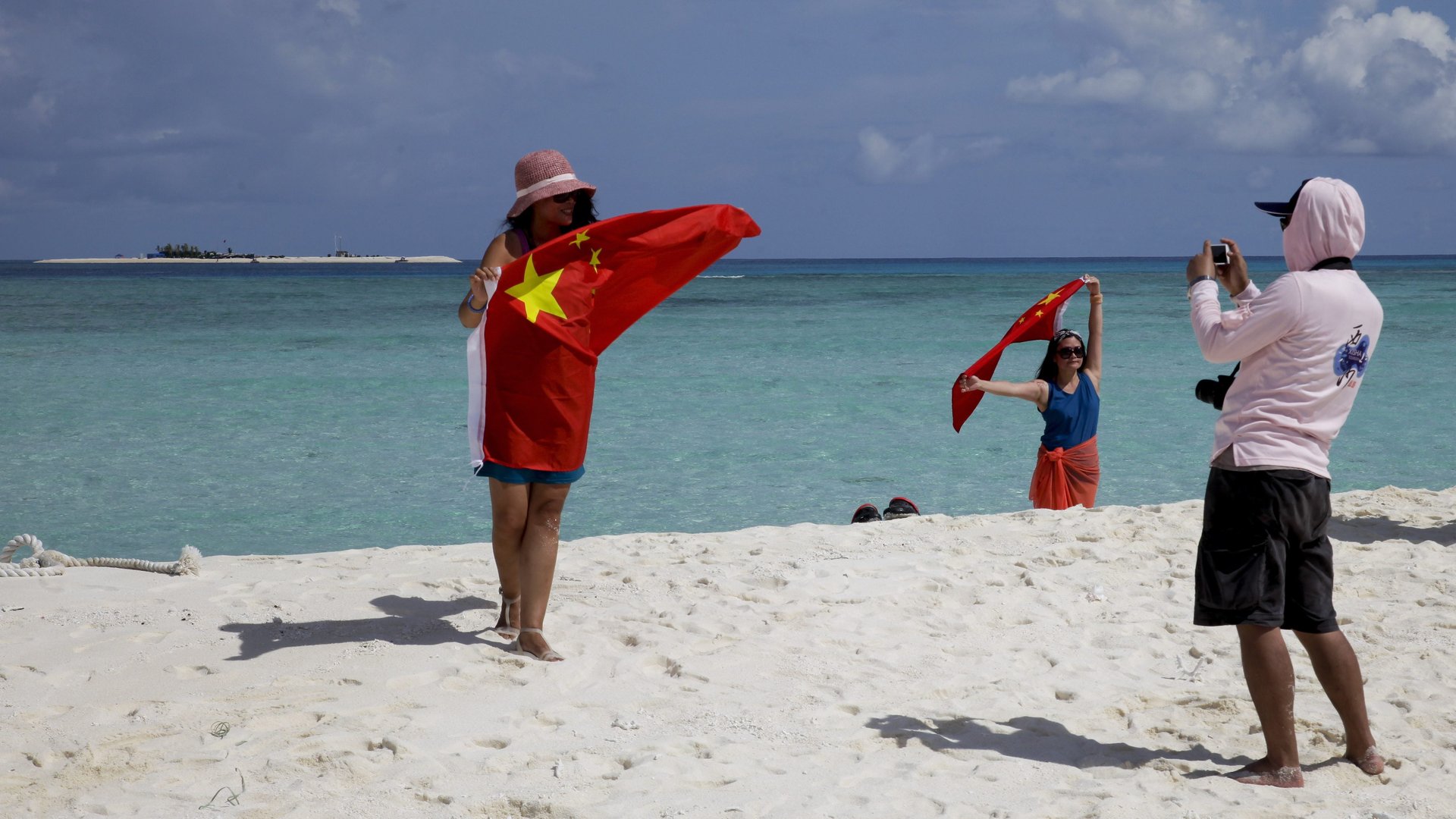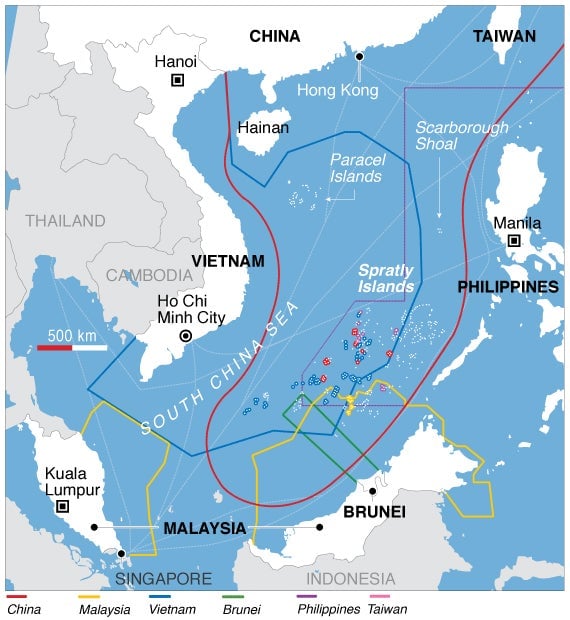China is sending forth patriotic tourists to bolster its South China Sea claims
If China has an equivalent tropical paradise to Hawaii, it’s Hainan Island. But some of the domestic tourists flocking to the popular holiday destination want to do more than have fun in the sun. They also want to express their patriotism.


If China has an equivalent tropical paradise to Hawaii, it’s Hainan Island. But some of the domestic tourists flocking to the popular holiday destination want to do more than have fun in the sun. They also want to express their patriotism.
Facing the South China Sea, Hainan has since 2013 hosted passenger cruises to the disputed Paracel archipelago, which is occupied by China but also claimed by Vietnam and Taiwan. Earlier this month, more such tours were launched from Hainan to meet growing demand. The trips include a stirring flag-raising ceremony on one of the Paracel islands and a documentary about how China bravely won full control of the chain from Vietnam in the mid-1970s. The ride from Hainan takes about 13 hours.
China claims nearly the entire South China Sea as its own territory, ignoring a ruling by an international tribunal last July saying the sweeping claim had neither legal nor historical basis.

If local officials have their way, Hainan tour operators will soon also offer seaplane flights to the Paracels. At the annual two-week National People’s Congress held in Beijing this month, Hainan officials requested permission from the military and relevant ministries to offer the tours, complete with diving and fishing (paywall). In a document submitted to authorities, they said the number of tourists to the Paracels increased 48.8% last year, passing 12,000.
It would take about 90 minutes to fly from Sanya, a city on Hainan’s south coast, to Woody Island, the largest of the Paracels. Last year Xiao Jie, a local mayor, said he hopes the Paracels would become a major tourist attraction comparable to the Maldives.
Beijing is eager to establish a regular presence of Chinese tourists and civilians on the contested South China Sea islands it controls. Kyodo News, a Japanese newswire, reported this week it had obtained a copy of an internal magazine of the People’s Liberation Army, and found in it an article describing the “policy of boosting the military influence in the area under the cloak of ‘civilian activities.'”
A video from the South China Morning Post last year described how nearly 80 Chinese civilians were paid 45 yuan a day by the government to live on tiny Yagong Island in the Paracels.
China is also trying to lend a greater civilian touch to the controversial militarized islands it has built atop reefs in the more distant Spratly archipelago, where Vietnam, Taiwan, Malaysia, Brunei, and the Philippines also claim territory. For example last year it added a farm to Fiery Cross Reef, complete with hundreds of livestock, including pigs, chicken, and geese. China is planning to start regular cruises to the Spratlys before 2020.
As with the cruises to the Paracels, these will likely be open only to Chinese citizens who pass background checks and show proper patriotism.
Additional reporting by Zheping Huang